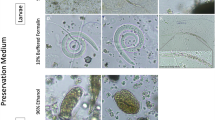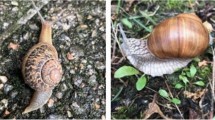Abstract
THE general practice of using ethyl alcohol as a preservative fluid for museum specimens has several disadvantages. At the present time when we are faced with the possibility of high explosives and incendiary bombs damaging museums, the inflammability of alcohol naturally causes much concern to the staff of such institutions. Ten years ago1 I directed attention to a preservative fluid, first used by W. Pampel2, for storing specimens of insects for several years with the tissues soft and in good condition for subsequent dissection. I gave this medium the name of ‘Pampel's fluid’ and its composition is as follows:
This is a preview of subscription content, access via your institution
Access options
Subscribe to this journal
Receive 51 print issues and online access
$199.00 per year
only $3.90 per issue
Buy this article
- Purchase on Springer Link
- Instant access to full article PDF
Prices may be subject to local taxes which are calculated during checkout
Similar content being viewed by others
References
Bull. Entom. Res., 20, 169, (1929).
Z. wiss. Zool., 108, 290, (1914).
Author information
Authors and Affiliations
Rights and permissions
About this article
Cite this article
IMMS, A. A ‘Safe’ Fluid for Museum Use. Nature 144, 599–600 (1939). https://doi.org/10.1038/144599b0
Issue Date:
DOI: https://doi.org/10.1038/144599b0
Comments
By submitting a comment you agree to abide by our Terms and Community Guidelines. If you find something abusive or that does not comply with our terms or guidelines please flag it as inappropriate.



